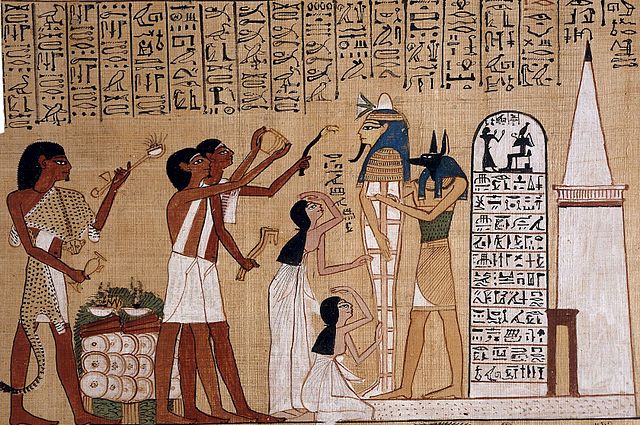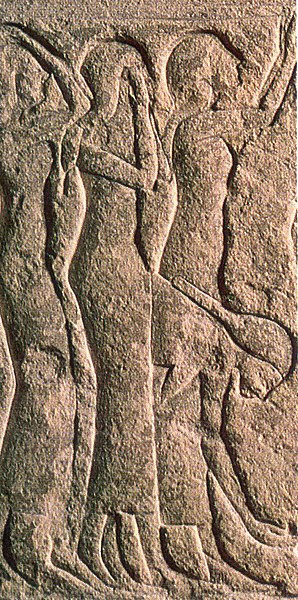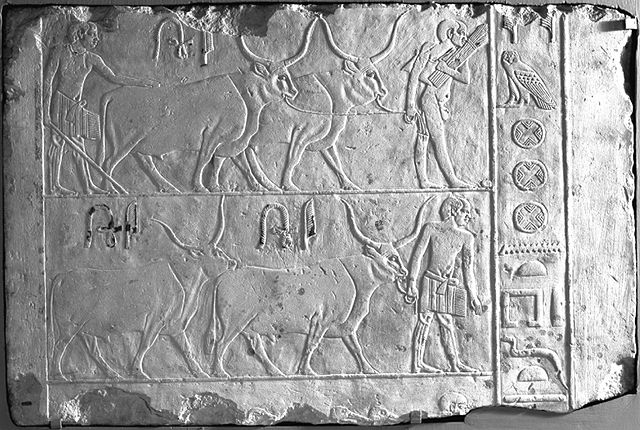The ushabti was a funerary figurine used in ancient Egyptian funerary practices. The Egyptological term is derived from 𓅱𓈙𓃀𓏏𓏭𓀾 wšbtj, which replaced earlier 𓆷𓍯𓃀𓏏𓏭𓀾 šwbtj, perhaps the nisba of 𓈙𓍯𓃀𓆭 šwꜣb "Persea tree".
Memphis, 500 BC – Troop of funerary servant figures ushabtis in the name of Neferibreheb, Louvre-Lens
Four ushabtis of Khabekhnet and their box; 1279–1213 BC; painted limestone; height of the ushabtis: 16.7 cm; Metropolitan Museum of Art
Ushabti Figurine, Albert Hall Museum
Collection of Ushabti Figurines, Albert Hall Museum, Jaipur
Ancient Egyptian funerary practices
The ancient Egyptians had an elaborate set of funerary practices that they believed were necessary to ensure their immortality after death. These rituals included mummifying the body, casting magic spells, and burials with specific grave goods thought to be needed in the afterlife.
The Opening of the Mouth ceremony being performed on a mummy before the tomb. Extract from the Papyrus of Hunefer, a 19th-Dynasty Book of the Dead (c.1300 BCE)
Professional mourners in elegant gestures of mourning
Relief of Men Presenting Oxen, c. 2500–2350 BCE Limestone. In this relief, three men bring cattle to the tomb owner, "from the towns of the estate", as the inscription says. Two of these balding, rustic laborers wear kilts of coarse material and the other wears nothing at all. A fragmentary scene below shows men bringing cranes, which Egyptians penned and raised for food. Artisans carved images of live food animals in tombs to supply the deceased with an eternal source of provisions.
Mask from a coffin. Middle Kingdom (12th or 13th Dynasty, c. 19th century BCE). Cartonnage, 37.1387E, Brooklyn Museum








